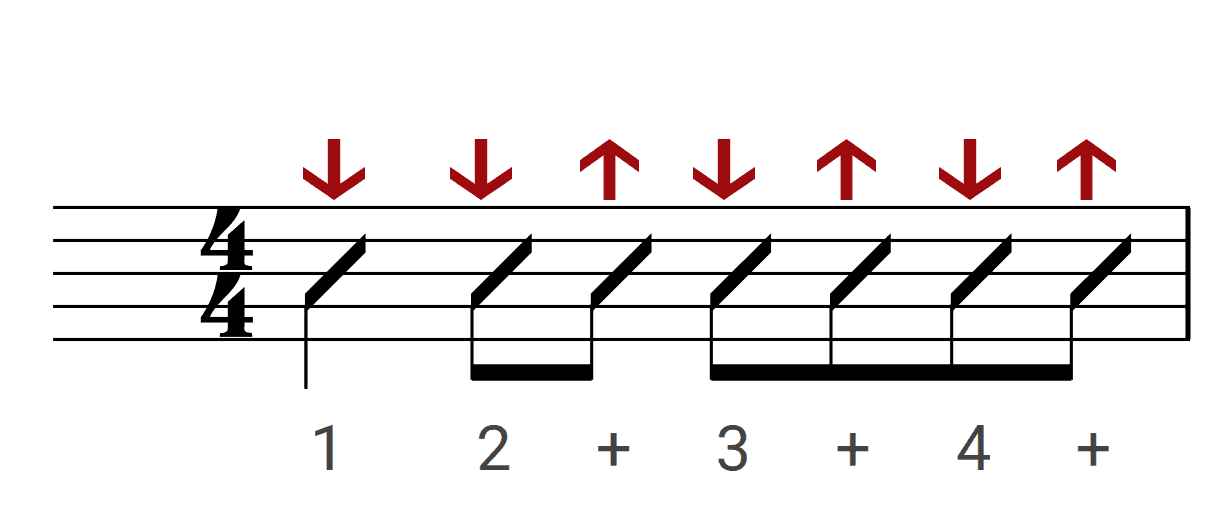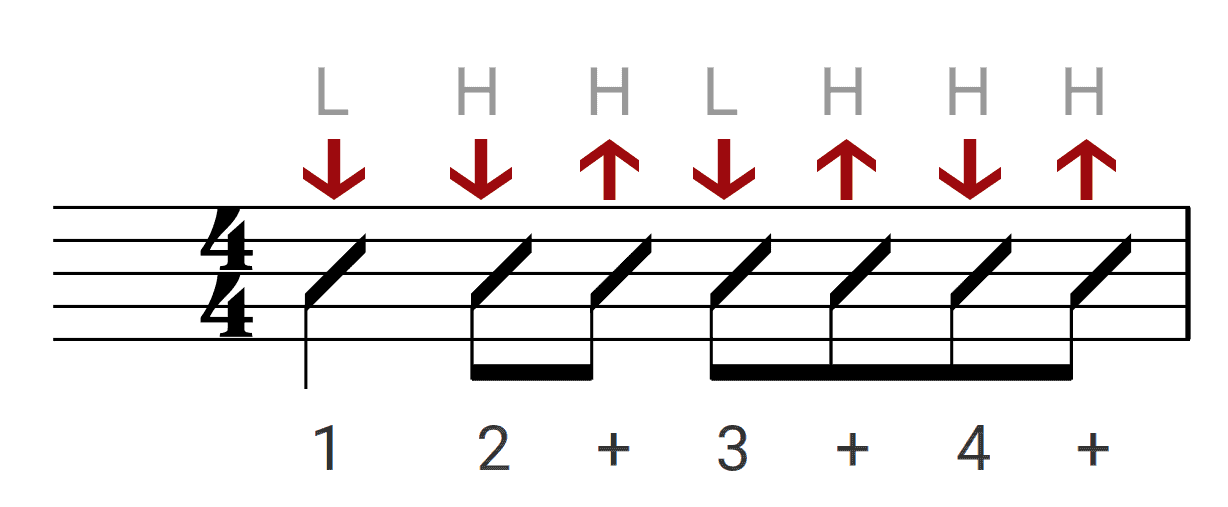Learning a lot of different strumming patterns is like having a wide variety of tools in your toolbox. The more of these “tools” you have the more you can do on guitar. But strumming patterns are so much more than just tools. They’re a foundation for every guitar player’s rhythm.
Rhythm might be the hardest thing to learn on guitar. You need rhythm for strumming patterns of course. And you might be surprised to know that you need it for melodies and riffs too!
The Most Important Strumming Pattern
This strumming pattern is what I consider the most important. With it you can play songs in a wide variety of styles. And from it you can learn new strumming patterns.
It’s a pretty straightforward strum with some hidden complexities. Check out 0:56 in the video to hear it!

Guitar Strumming Made Simple
This strumming pattern is in 4/4 (four-four) time. Which means there are 4 beats in the measure. This is the most common time signature you’ll see. You know you’re in 4/4 when you tap your foot along to a song counting “1-2-3-4, 1-2-3-4”.
You might have also heard measures counted as “1-and-2-and-3-and-4-and”. The “ands” are the upbeats. The numbers are the downbeats (the beats your foot taps to).
For this strumming pattern, you’ll strum down on all of the numbers, and up on all of the “ands” except the first one. So if you were counting all of your strums, it would sound like this:
1, 2-and-3-and-4-and
1, 2-and-3-and-4-and
Sometimes I find it helpful to speak the rhythm while clapping. This helps you learn the rhythm before worrying about playing it with chords.
How To Strum A Guitar With Style
Once you get the rhythm down you can start to work on dynamics. What are dynamics? Dynamics are essentially variances between each strum. These variances can be how hard you strum, and how many strings you play in each strum.
Humans aren’t machines so each strum will naturally have different velocities. This is a good thing! This adds texture and dynamics to your playing. One easy way to immediately add dynamics is to put emphasis on the “1” strum. Which really means strum the beats 2, 3 and 4 a little lighter.
Try that real quick. Don’t necessarily play the “1” harder. Play it at your normal velocity, and strum the “2-and-3-and-4-and” softer. How does it sound?
The next way to control your dynamics is to not strum all of the strings on every strum. I know that sounds backwards but it’s what most people do naturally! Here’s the easy way to think about it:
Play mostly low strings on a down strum
Play mostly high strings on the up strum
Give that a shot. How does it sound?
Now try that along with the first tip, putting the emphasis on the “1” strum.
Note: There’s no set way to play these dynamics, but these are good starting points. Every guitar player will naturally play dynamics differently, so experiment and see what sounds good to you.

Rhythm & Guitar Strumming Tips
The last tip is so important that I wanted to keep it as its own tip. It’s all about keeping rhythm.
If you watch a video of a guitarist strumming through chords you’ll notice that their strumming arm doesn’t stop. It’s always in a down-up-down-up-down-up motion. Even though they’re not strumming on every down or up.
I like to call this the pendulum. It’s very important to learn to keep rhythm and a good flow in your strumming. No matter what strumming pattern you play, your arm is always moving. Go ahead and try this with the Most Important Strumming Pattern.
You don’t even need to play a chord. Mute the strings with your left hand and try this pendulum trick. Once you have a good feel for it add in the chords. Then add in the dynamics.
All of these things take time to get down and to feel natural. Rhythm comes more naturally to some. But everyone can learn it with practice! Practice this with a metronome at a manageable speed. Once you feel mostly comfortable increase the speed by 5bpm at a time.
Tell Us What You Think - Please Comment Below!
We would love to hear your comments and questions. What specific things are you struggling with while learning guitar?
